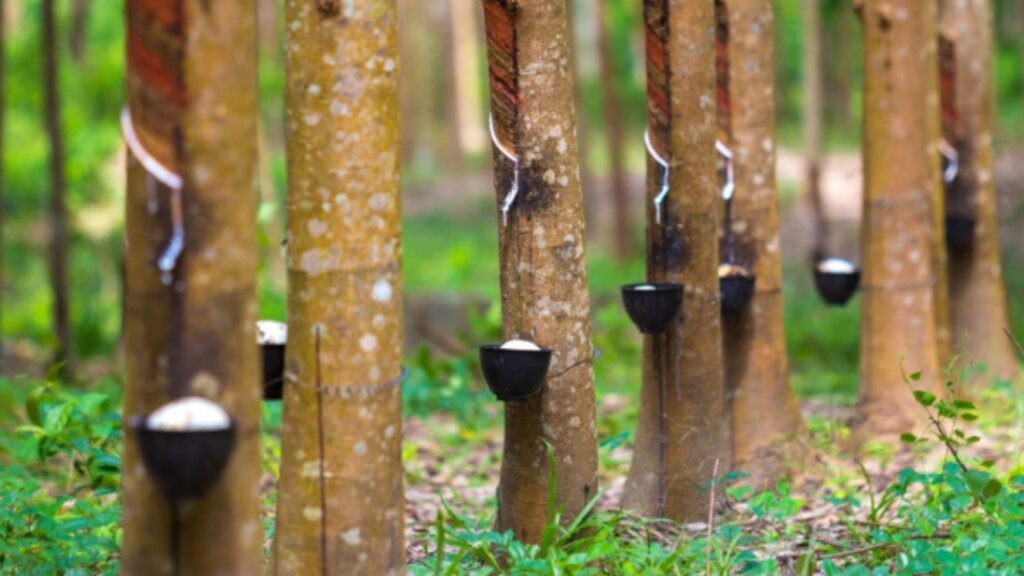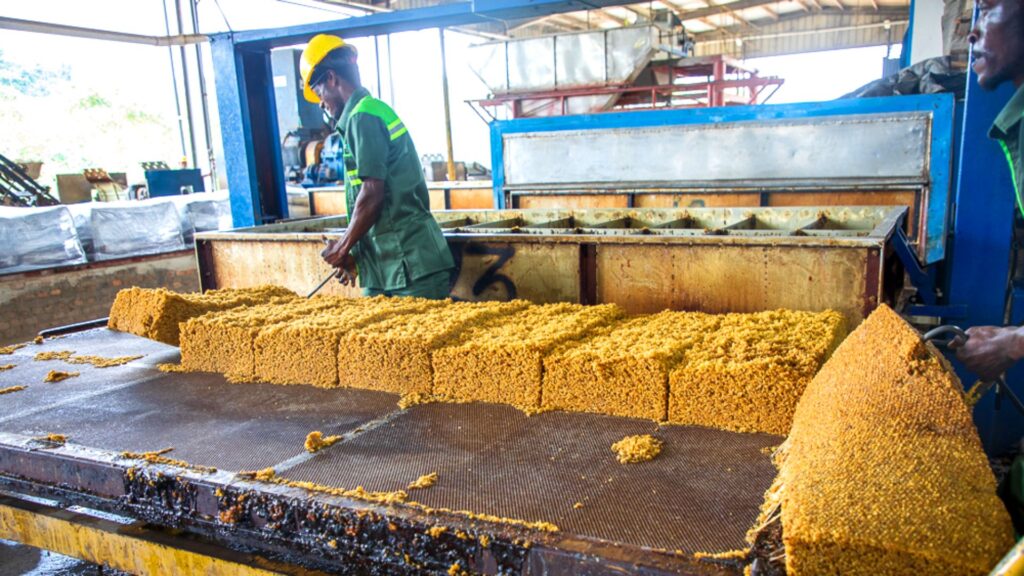Ghana loses more than $100 million annually due to low processing in its rubber industry, according to the Rubber Processors Association (RPA). The figure was shared by Emmanuel Akwasi Owusu, president of the association, in comments reported by GhanaWeb on September 20.
“When you add value to the raw rubber, which is sold at $600, you can then have an additional $900. So, if we are exporting only the raw, we are losing $900. If you multiply that by our production per year, it is $100 million,” Owusu explained.
Trade Map data shows Ghana exported nearly 138,212 tons of natural rubber worth $227.4 million in 2024. Of this total, 56.5% (78,119 tons) was exported in raw form, 37.4% as technically specified natural rubber (TSNR) from industrial first-stage processing, and around 6% as ribbed smoked sheets (RSS) from artisanal or semi-industrial processing.

The RPA is calling on authorities to strengthen regulation of the sector to ensure raw material is available for local processors. However, several structural challenges remain.
A study of Ghana’s rubber sector published in July 2025 in Commodities noted that the 2023 ban on raw rubber exports (cup lumps) in Côte d’Ivoire redirected flows to Ghana. There, foreign intermediaries, mainly Indian and Chinese, captured a significant share of the raw rubber market. This diversion has partly drained Ghana’s own industrial supply.
Official data shows Ghana Rubber Estate Limited (GREL) is the country’s main processor, with two plants capable of handling up to 20 tons per hour. Other smaller players include NARUBIZ Ltd, Rubber Plantations Ghana Ltd (RPGL), APEX Rubber Processing, and Yaeric Company Ltd.



